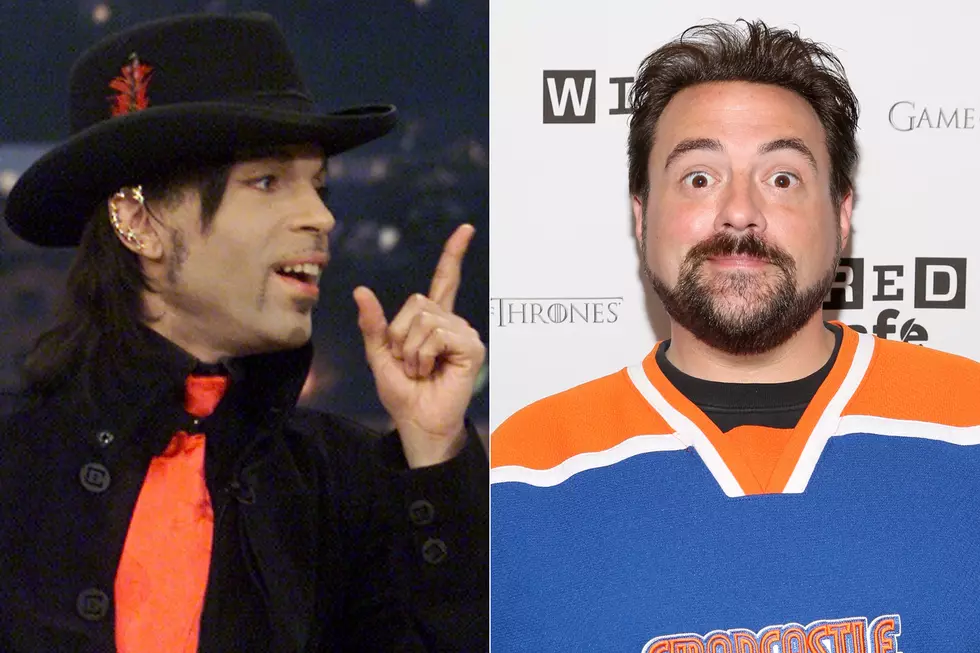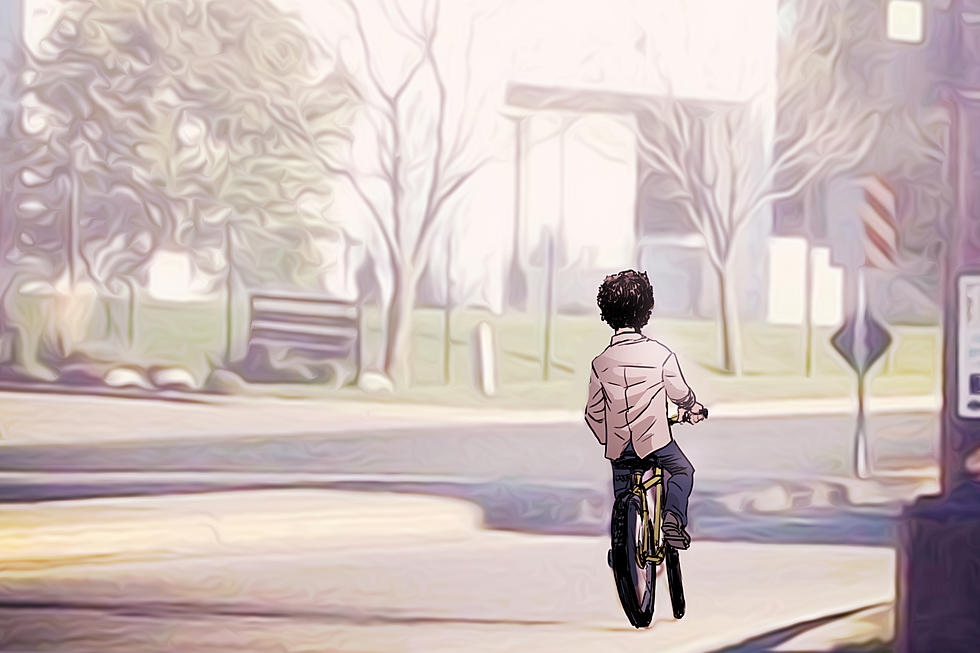
When Prince Went Full Guitar Hero on ‘The Undertaker’ Home Video
Prince would have been a happy – or at least justified – man at sunrise on the morning of Jun. 14, 1993. He’d just completed the recording of a jam-like power trio album featuring himself, New Power Generation bassist Sonny Thompson and drummer Michael Bland, and everyone was delighted with the result. The recording was to be released as a covermount CD with Guitar World magazine, aimed squarely at those fans who’d always wanted to hear what happened if Prince just locked down and rocked up in the most primal of band formats.
With cameras rolling in Paisley Park, they stormed through a live seven-song set. “Picture this,” Bland told Guitar World a year later. “A DAT machine, a 32-channel board, two techs and three players. It was about three o’clock in the morning. We got our sounds together and just let the DAT roll. We took about an hour to make that record, from start to finish, playing straight through with no overdubs. The sequence of songs on the record is exactly the way we played it. The guitar segues from one song to the next, like when we do live stuff.”
Guitar World reported that Prince’s “guitar solos (and there are many of them) fling themselves violently outside the confines of traditional blues riffing. The first solo is fluid and slippery… And with the second guitar solo, all hell breaks loose – mega-distorted, dissonant madness which in its own guitarristic way, is the most excessive thing yet from an artist noted for always going over the top.”
Thompson noted that his bandleader would “really start opening up and playing a lot of different things when me and Michael do a trio thing with him,” and Prince himself said of the album: “It’s real garage, you know? But Warners won’t release it.”
The session had taken place a week after Prince had announced the change of name to his unpronounceable Love Symbol, as a result of continuing tensions with the Warner Bros. label. Executives believed that if they allowed the release of the amount of material Prince was making, they’d saturate the market and end up losing money. As that argument played out between businessmen and artist, Warners refused to allow the release of the power trio album, titled The Undertaker – going so far as to force Prince to take each of the 1,000 copies he’d printed and encase them in plastic so that they couldn’t be played.
It wasn’t until Mar. 6, 1995 – nearly two years later – that fans got a taste of what they’d missed. The Undertaker that arrived was a 42-minute performance, which included the seven tracks planned for the LP plus an additional five-minute “Introduction.” The live footage was entwined with a vague storyline performed by actress Vanessa Marcil (a regular on General Hospital at the time, and later known for Beverly Hills, 90210 and Las Vegas). She wandered around Paisley Park as the trio played, at first determined to take her own life, then changing her mind as the music affected her. "I don't do any dancing,” she said later. “I wear no makeup and my hair's kinda messy throughout the whole thing. I look pretty scummy. Those are the kinds of roles I really like to play. I'd much rather play someone basic and real than someone who's all done up wearing pretty tight outfits.”
Clip from ‘The Undertaker’ Home Video
The Undertaker contained two all-new songs, “The Ride” and “Poorgoo,” plus a version of “Dolphin,” which by that time had appeared on 1994’s Come album. Also present was an early version of “Zannalee,” which would be fully released in 1996, and a rare reworking of older song “Bambi.” A rare cover, “Honky Tonk Women” by the Rolling Stones, appeared alongside “The Undertaker” itself. Prince had written the track for Mavis Staples after she told him about her eight-year marriage to a mortician, and her version had been released in August 1993, two months after the Paisley Park session.
The home video was launched under Prince’s real name, apparently as a result of Warners’ desperation to recoup some of the money they’d lost with 1992 Love Symbol Album. With the exception of bootlegs and a small number of original CDs that survived the plastic coating, The Undertaker album was never released, and the home video was never re-released in DVD or digital formats; although, by 2001, with the launch of “Poorgoo” and “The Undertaker” as downloads, all the new tracks found their places in the world.
Prince - ‘The Undertaker’
Mavis Staples - ‘The Undertaker’
More From WKFR










